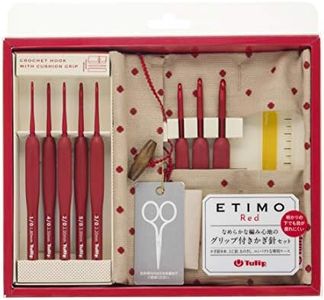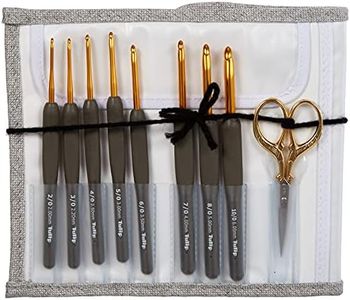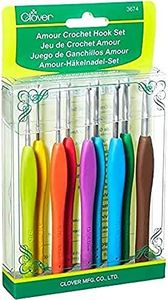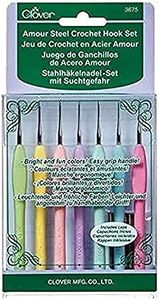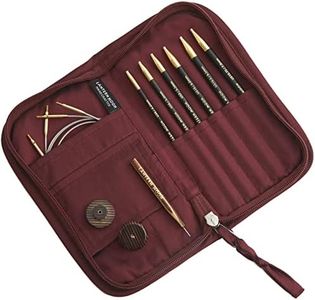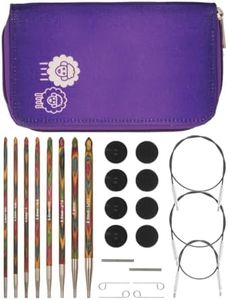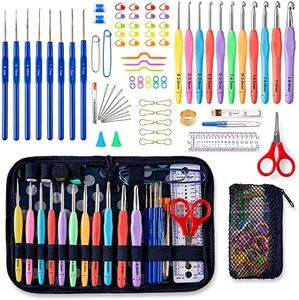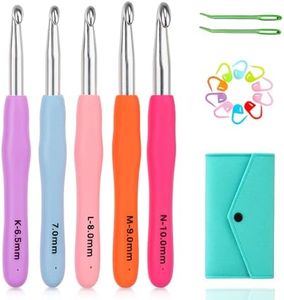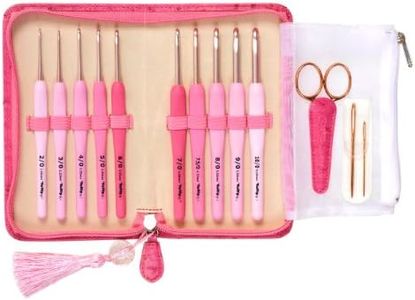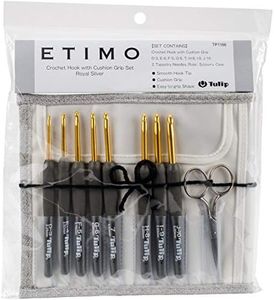We Use CookiesWe use cookies to enhance the security, performance,
functionality and for analytical and promotional activities. By continuing to browse this site you
are agreeing to our privacy policy
10 Best Crochet Hooks
From leading brands and best sellers available on the web.By clicking on a link to a third party's website, log data is shared with that third party.
Buying Guide for the Best Crochet Hooks
Choosing the right crochet hook is all about matching your skill level, comfort, and the type of projects you want to create. Crochet hooks come in different materials, sizes, and features, each suited for specific needs and yarn types. The right crochet hook feels good in your hand and works well with your chosen yarn and project, making crafting enjoyable and efficient. Understanding the main features will help you find a hook that matches your crafting style and goals.MaterialCrochet hooks are made from various materials such as aluminum, plastic, bamboo, steel, and wood. The material affects the hook's weight, smoothness, and grip. Aluminum hooks are lightweight and glide well with most yarns, making them a popular, all-purpose choice. Wooden or bamboo hooks are warmer to the touch and lighter, which some find more comfortable for extended use, but they can grip the yarn a bit more, which is useful for slippery yarns. Steel hooks are usually for very fine work like lace. To pick the right material, think about how the hook feels in your hand and how it interacts with your yarn—a smoother hook aids speed, while a bit more grip can help with control.
Size (Diameter)The size of a crochet hook refers to the diameter of its shaft, which determines the size of the stitches and ultimately affects the look and drape of your finished piece. Hooks come in a range from very fine (for lace) to very large (for chunky projects). Small sizes are best for delicate work like doilies, while medium sizes suit standard yarn and everyday projects, such as scarves and hats. Large hooks create big, looser stitches best for chunky yarn and projects like blankets. Check the yarn label for a recommended hook size, but also consider how tight or loose you crochet; if you tend to crochet tightly, try a size up, and vice versa.
Handle and GripThe handle design impacts comfort, especially for longer sessions. Some hooks have simple, slim handles, while others feature ergonomic grips with soft padding or unique shapes to reduce hand strain. If you crochet a lot or have hand pain or arthritis, ergonomic handles can make a big difference. Try different handles to see what feels best—everyone's hands are different, so what works for one person might not work for another.
Head Shape and Hook TipThe head of the hook can be more rounded or more pointed, and the hook can be deeper or more shallow. Pointed heads are helpful for getting through tight stitches or more intricate patterns but can split yarn if not careful. Rounded heads are gentler and less likely to split the yarn, making them friendlier for beginners. The depth of the hook makes it easier or harder to keep the yarn on the hook. Beginners usually do well with a medium-depth, rounded hook, while experienced crocheters might have a strong preference for sharper heads for precision work.
